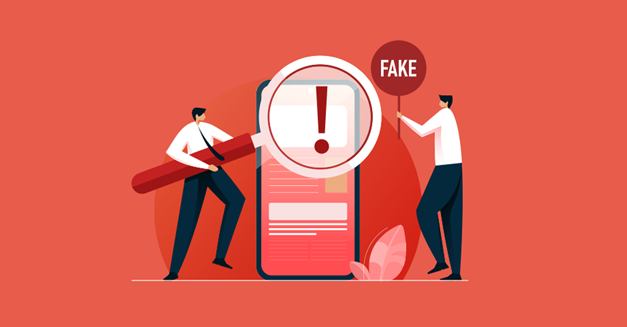Small Business Goals: Strategies You Should Know in 2022
Small Business Goals: Strategies You Should Know in 2022
Even if the idea of a company objective appears pretty straightforward, establishing small business goals is seen to be a crucial component for success.
This is so because small business goals have a big impact on how people behave and make decisions on a daily basis.
These small business goals aid the company in knowing and understanding its objectives, from CEOs to entry-level employees.
Let’s look at some strategies for setting business goals and how to choose firm goals for your business.
Creating Actionable Goals

Businesses maintain activity alignment by setting company goals.
Small business goals specify what a company hopes to accomplish over time. Business objectives must be precise and have a deadline if they are to be successful.
Organizations may assess if they’ve achieved their stated goals and, if not, how far they’ve fallen short thanks to the clarity and timetable.
An organisation is free to set as many goals as it likes, both for the organisation as a whole and for specific organisational units.
There are three types of small business goals: short-term, mid-term, and long-term. All corporate objectives, however, must include a precise objective that the organisation hopes to accomplish within the given time frame.
Each employee is able to set priorities for team choices as well as for personal initiatives and tasks that will assist the company’s efforts to meet its objectives.
The team rows together to the same finish line with timeframes to push them to take the necessary steps to arrive at the destination on time, which helps the organisation keep focused on what matters most.
Choosing Firm Goals for Your Business

When you consider choosing firm goals for your business you want to ensure that they your business development goals are actionable goals.
Here are some strategies to creating firm business goals.
Examine the Previous Year
Analyze the full prior year. You may learn what worked and what didn’t for the company last year by talking to your staff.
Any factor that contributed to your company’s success should be used to spur expansion in the coming year.
The failures from the prior year do, however, point to weak points in the company that require strengthening.
Your course of action will be heavily influenced by the nature of the weakness. It will frequently be essential to direct or redirect resources toward the troublesome area.
Typical areas of your organisation that may need development include management, marketing, operations, and finance, among others.
However, you should follow up on each evaluation with specific strategies to capitalise on your company’s advantages and address its shortcomings.
Evaluate the Business’ Existing Situation
Analyze the company’s present situation as well as market, industry, economic, demographic, and other developments.
There are several ways to assess the state of a business, with SWOT analysis being one of the more used techniques.
The SWOT framework, as its name suggests, walks business leaders through the process of identifying the strengths, weaknesses, opportunities, and threats that their organisation faces.
SWOT analysis is a tool that may assist you in identifying the current strengths of your business and developing a winning future plan.
SWOT may also reveal business areas that are restricting your growth or that, if left unchecked, your rivals may exploit.
In other words, what’s happening within and outside of your firm is examined in a SWOT analysis together with internal and external issues.
As a result, although some of these elements will be in your control, others won’t.
In any instance, once you’ve identified, noted, and considered as many variables as you can, the best course of action will become more obvious.
In particular, it assists business leaders in determining what is effective and what needs to be improved, which emerging markets, goods, or services could spur company growth, and the obstacles, difficulties, rivalry, and other elements that pose a threat to expansion or even survival.
Additional insights into these topics are provided through benchmarking and market analysis.
Establish SMART Business Goals

You must establish specific objectives if you want your firm to grow in 2022. By establishing SMART small business goals, this is feasible.
Specific, Measurable, Achievable, Realistic, and Time-Bound objectives are the best.
This implies that you should have specific objectives that clearly outline the things you need to do as well as a timeline for doing so.
You must also make it clear how you plan to demonstrate that each objective has been accomplished.
Give each objective a deadline; many business owners and executives establish short-, mid-, and long-term goals before outlining a precise time range for each category or individual goal.
When setting deadlines, business leaders should take the sector and market into consideration.
While well-established organisations may be able to choose goals with longer deadlines, startups and businesses in fast-paced industries should have shorter, tighter schedules.
Employ Quality Data
Today’s corporate world is heavily reliant on data. Your company’s success or failure will consequently be determined by how accurate the data utilised in it is.
Effective business analysis depends on using correct, well-structured data, whereas using inaccurate data might harm your company irreparably.
The utilisation of high-quality data should be prioritised when you begin your 2022/2023 plan.
Encourage your staff to use best practices for data management, such as documenting business processes to get precise data on your company’s success.
Additionally, you may frequently clean your databases and assess the calibre of the data used.
To assist you with this work, you may hire a data consultant. They may also assist with evaluating your company’s current database to make sure it is accurate and consistent and has the data you need.
Additionally, you should rank the data according to importance for the company and evaluate the data’s quality using key performance indicators (KPIs).
Establish Key Performance Indicators (KPIs)
After creating SMART objectives with your team, you need to consider putting two components into practice: monitoring your goals and setting deadlines.
Setting KPIs is the most popular method of determining whether or not you are on track to meet your small business goals.
KPIs, or “key performance indicators,” are metrics that you may monitor to determine whether or not you are achieving your goals.
They are powerful motivators as well. When you make sure your goals are SMART, you’ll already have the KPIs you need to track in place.
Along with defining unique KPIs for each employee, you will also have other KPIs for the company as a whole, such as total monthly sales objectives.
Include Business Objectives in the Strategy for the Company
Develop a business strategy that will move the company toward its goals by defining and implementing milestones that may signal progress, and include small business goals into the organization’s business plan.
Goals are set at the top, but they should circulate throughout the organisation so that each business unit may understand how to apply them to their own.
The business objectives should be communicated to the whole company, and the roles, responsibilities, and deliverables given to business departments, teams, and specific people should be in line with the goals.
Every employee in the company has to be aware of the objectives they are working toward.
Every successful business owner is aware that their employees are their most precious resource. When you are defining your business goals, this is never more true.
Every day, your team is out there working on your goods or interacting with customers. They are the ones who can advise you on what is and isn’t working for your company, what is hindering its growth, and where you should concentrate your efforts and determine your company’s goals for the upcoming year.
Therefore, when you’ve finished your SWOT analysis and decided which objectives you believe should be the most important for your company, sit down with your staff and solicit their input.
They could concur or offer helpful advice that you hadn’t considered.
Xoopah Helping You Fulfil Your Small Business Goals
Xoopah is a an all-in-one small business management platform that aids in managing the several facets of managing your organisation.
Xoopah is a one-stop shop for small company management, including everything from payments and contact management to financial tracking and reporting.
Xoopah can help you streamline your operations so you have more time to focus on what you do best—run your business!
The smart growth tools provided by Xoopah power small enterprises. Xoopah was developed in order to increase the discoverability, approachability, and ability of small businesses to keep customers for life.
We accomplish this by providing small business owners with simple and intelligent growth tools that they can use to manage their relationships, streamline customer interactions, respond to reviews, and get payments on time so that they are totally in control of their firm.
In business, remember that establishing goals is vital, but the tools you use to accomplish them are much more crucial.
Management and time-saving strategies are two tools that may be used to assist small enterprises. With Xoopah, these two things are achievable.
Xoopah helps you manage your business to be able to meet your small business goals.
In Summary
Setting goals is essential for maintaining focus and organizing activities. You may use small business goals to guide your decision-making on novel concepts and projects that are crucial for organizational development.
Setting objectives helps you stay motivated and move closer to the organization’s goal.






